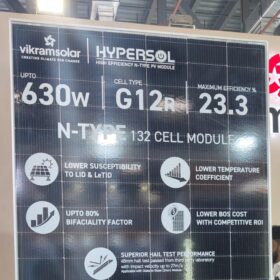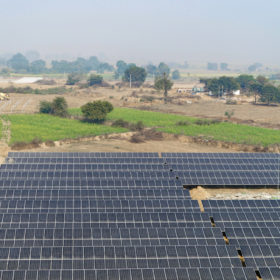Dust, bird droppings and other materials accumulating on the surface of PV modules in the field already amount to billions of dollars each year in lost energy output and added cleaning costs. So understanding how different site and installation conditions affect the build up of dust and droppings on a module surface is valuable knowledge for the PV industry.
A group of scientists led by the Vellore Institute of Technology in Tamil Nadu, India, had this in mind when they came up with a simple yet effective way to study the effects of different types of soiling on PV modules. The scientists gathered samples of five different types of soil (black soil, desert soil, red soil, alluvial soil, laterite soil) as well as coal dust and bird droppings, from various locations in India. The samples, in different amounts ranging from 10g to 50g, were then shaken and brushed onto the surface of PV modules, and the modules were tested using a sun simulator.
The results showed that at all tilt angles, bird droppings had the largest impact on module performance, with the 50g sample taking away more than 80% of the modules’ efficiency – a considerably larger loss than any of the dust or soil samples caused.
The study also found that the physical properties of the soiling material play a larger role than the angle of the modules in deciding the soiling rate. The results are discussed in full in the paper Experimental analysis on the impacts of soil deposition and bird droppings on the thermal performance of photovoltaic panels, published in Case Studies in Thermal Engineering.
The group says that its study will help contribute to a better overall understanding of the effects of soiling on PV modules. This knowledge could help project developers better assess site conditions and avoid locating a project in regions where soiling will be particularly heavy, or ensuring that appropriate mitigation measures can be included from the start.
They note, however, that the results of this study can only be applied to regions with a hot, dry climate similar to Vellore in India on which the simulation conditions were based – Further, climate-specific studies are needed to draw similar conclusions for other climate types.
This content is protected by copyright and may not be reused. If you want to cooperate with us and would like to reuse some of our content, please contact: editors@pv-magazine.com.









By submitting this form you agree to pv magazine using your data for the purposes of publishing your comment.
Your personal data will only be disclosed or otherwise transmitted to third parties for the purposes of spam filtering or if this is necessary for technical maintenance of the website. Any other transfer to third parties will not take place unless this is justified on the basis of applicable data protection regulations or if pv magazine is legally obliged to do so.
You may revoke this consent at any time with effect for the future, in which case your personal data will be deleted immediately. Otherwise, your data will be deleted if pv magazine has processed your request or the purpose of data storage is fulfilled.
Further information on data privacy can be found in our Data Protection Policy.